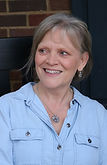Our Nation's Reading Crisis: Bring Back a Love of Books
- Susan Koehler
- Aug 31
- 4 min read
Our nation is experiencing a reading crisis.

The world of academia recognizes it.
In March 2023, The Atlantic published Katherine Marsh’s “Why Kids Aren’t Falling in Love With Reading,” claiming that standards-alignment and high-stakes testing create a “disregard for story” that robs reading of its joy. In November 2024, The Atlantic followed with Rose Horowitch’s “The Elite College Students Who Can’t Read Books,” about college students who lack the stamina to read an entire novel.
The publishing industry recognizes it. In July 2024, Publisher’s Weekly reported that print sales of middle grade books – books intended for 9-12-year-old readers – “fell 5% in the first half of 2024 from the comparable period in 2023. … the largest decline among all children’s age groups.” This is precisely the category of fiction that transitions children into independent readers, so this decline is very significant.
The government recognizes it. In January 2025, the National Assessment Governing Board reported that between 2022 and 2024, reading scores in both fourth and eighth grades declined by two points on the National Assessment of Educational Progress (NAEP). This follows a three-point decline between 2019 and 2022, indicating a very concerning trend.
The world is beginning to recognize it. According to The National Literacy Institute, the United States ranks 36th in the world in literacy, with 21% of adults being illiterate and 54% of adults functioning at a below-sixth-grade level of literacy. And even among adults who can read, NPR reports that reading is on the decline. If children don’t see their adults reading, there is little likelihood those children will become readers.
Many people will debate the effects of Covid, the Reading Wars, and “who’s getting it wrong” in the teaching of reading. But raging debates do not educate children, and strong opinions don’t make them want to read. The best way to become a better reader is to read. Children must engage with literature that ignites a desire to read.

What can we do to address this national reading crisis?
Well, let’s begin by backing away from the fights and showing books some love.
Read to children.
Reading to children from the earliest age is akin to eating leafy green vegetables –
no matter what fads may come and go, it’s always a winner. By reading to children, we introduce vocabulary and syntax, model reading fluency, demonstrate concepts of print, and most importantly, establish a warm emotional climate around books. If you’re interested in research and statistics, you can find them at Ferst Readers, an organization dedicated to providing monthly book deliveries to low-income children in the 0-5 age range.
Prioritize books.
In 2018, Pacific Standard reported on the results of a long-term study about books and readers. The study concluded that “people who grew up in book-filled homes have higher reading, math, and technological skills.” When planning outings with your child, give priority status to the library or bookstore. Check out the Events Calendar of your local indie bookstore; read books that have been made into movies, and then enjoy a movie night together; designate a quiet reading time in your daily schedule and honor it together. Demonstrate enthusiasm about literature, fill your home with books, and set aside time to read to and with your child, as well as time for them to read independently.
Refrain from using books as political tools.
While correlation should never be immediately interpreted as causation, it’s significant to note that the increase in book challenges, the heated debate over kids’ books, and the personal threats made toward teachers and librarians correlates with the decline in reading. There are teachers who have given away their entire classroom libraries because they don’t want to risk being harassed by a parent who expresses discontent with a book. There are unread books sitting on library shelves, waiting to be approved by committees. Check out the American Library Association to find out just how prevalent the politicizing of books has become. How can we expect children to fall in love with books when adults create an atmosphere of conflict and retribution?
Prioritize joy.
It’s an unfortunate reality that our obsession with measuring reading ability has too often caused children to dislike and avoid reading because they feel incompetent and are forced to approach it as a task. Let’s examine our practices. If students’ interactions with text revolve mainly around timed readings, comprehension assessments, and bland decodable texts that accompany an instructional program, we need to flip the ratio. Reading for pleasure, within their level of competence, should be encouraged and celebrated. Reading to children models reading behavior and fosters a desire to read and grow. Reading together, whether building community through a classroom read-aloud or bonding as a family through a shared book, produces a value far beyond any skill-based worksheet or test-practice activity.

Three practical steps can change the trajectory.
Change begins at home. We must accept that the best way to become a better reader is to read. And then we must accept that reading begins at home. Make reading a beloved part of your family’s daily life.
Next, spark reading joy in your school. Support teachers and librarians with kindness, and encourage daily read-alouds and classroom libraries.
Finally, support reading in your community through Little Free Libraries, literacy initiatives and volunteer activities, public library and indie bookstore programs, and organizations that put books in the hands of low-income students in your community, like Ferst Readers and Dolly Parton’s Imagination Library.
Let’s overwhelm the reading crisis with reading joy. Today is a good day to begin.
















Comments